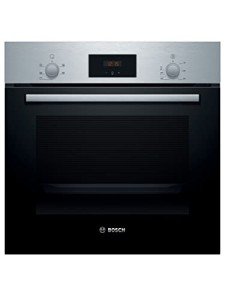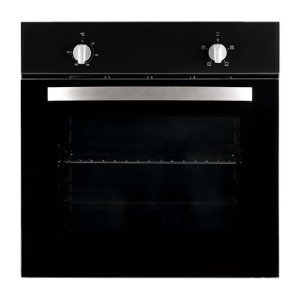best-built-under-single-oven4404
best-built-under-single-oven4404
You’ll Never Be Able To Figure Out This Single Built In Oven’s Secrets
The Comprehensive Guide to Single Built-In Ovens: Features, Benefits, and FAQs
Introduction
In modern kitchen areas, the integration of home appliances is essential to accomplishing a structured design. Among these appliances, the built-in oven sticks out as a staple for everyday cooking. In specific, single built-in ovens are gaining appeal due to their space-saving design and effectiveness. This post explores the features, advantages, and commonly asked questions about single built-in ovens, helping property owners make notified choices.
What is a Single Built-In Oven?
A single built-in oven is a cooking appliance developed to be embedded within kitchen cabinetry, providing a seamless look that matches the kitchen’s visual. Unlike freestanding ovens, built-in variants offer a variety of functions and designs that deal with contemporary culinary requirements.

Key Features of a Single Built-In Oven
Single built-in ovens come with a variety of features that boost functionality and user experience. Here are a few of the most important characteristics:
| Feature | Description |
|---|---|
| Size and Capacity | Generally varies from 24 to 30 inches in width; suitable for different kitchen sizes. |
| Cooking Modes | Multiple settings, consisting of convection, baking, broiling, and in some cases steam cooking. |
| Controls | Digital touch controls or traditional knobs with precise temperature level settings. |
| Self-Cleaning Options | Numerous designs include self-cleaning functions for easier maintenance. |
| Energy Efficiency | Created to take in less energy, often with an A+ energy score. |
| Safety Features | Includes child locks, cooling systems, and temperature level sensing units. |
| Style Options | Available in numerous surfaces (stainless-steel, black, etc) and designs (modern-day, classic). |
Advantages of Using a Single Built-In Oven
The adoption of single built-in ovens uses many benefits:
- Aesthetics: They produce a modern and sleek look in the kitchen, blending flawlessly with cabinets.
- Space-Saving: Ideal for smaller kitchen areas, they are designed to enhance area by being built into walls or cabinets.
- Increased Functionality: Many models come with sophisticated cooking innovation such as wise functions that allow push-button control through mobile phone.
- Easy to Use: With intuitive controls, built-in ovens are easy to use and suitable for both novice and knowledgeable cooks.
- Improved Cooking Performance: Convection models circulate hot air for even cooking results.
Popular Brands and Models
Numerous brand names dominate the single built-in oven market, each offering unique features to accommodate customer choices. Here are some notable ones:
| Brand | Popular Models | Secret Features |
|---|---|---|
| Bosch | HBN8451UC, HBL8453UC | European style, convection heat, Wi-Fi connectivity. |
| Electrolux | E30SO75GPS, E30SO75PPS | Variations in size, advanced barbecuing abilities. |
| Samsung | NV51K6650SG | Double convection, smart technology, versatile cooking modes. |
| Whirlpool | WOS51EC0HS | Budget-friendly, trusted, self-cleaning features. |
| LG | LWS3063ST | Smart technology, air fry mode, smooth aesthetics. |
Installation Considerations
Setting up a single built-in oven involves particular factors to consider:
- Measurement: Ensure that the area set aside works with the oven’s measurements.
- Ventilation: Adequate air flow must be kept for safety and performance.
- Electrical Needs: Check voltage requirements and make sure appropriate electric outlets are available.
- Professional Installation: While some homeowners may pick DIY, hiring a professional can reduce setup concerns.
Regularly Asked Questions (FAQs)
-
How much area is required for a built-in oven?
- A built-in oven generally requires a designated area that differs by model, usually from 24 to 30 inches in width. Constantly describe the producer’s specs for accurate measurements.
-
Can I install a built-in oven by myself?
- While some may attempt a DIY setup, it is often advised to work with a professional to make sure appropriate fitting, electrical connections, and ventilation.
-
Are single built-in ovens more expensive than freestanding designs?
- Usually, yes. Single built-in ovens tend to cost more due to their style, installation, and additional features.
-
What are the differences between convection and regular ovens?
- Convection ovens have a fan that distributes hot air throughout, leading to even cooking. Standard ovens rely on convected heat, which might result in locations and irregular cooking.
-
What maintenance is required for a built-in oven?
- Regular cleaning, ensuring vents remain unobstructed, and monitoring functions. Numerous models offer self-cleaning choices, which streamline upkeep.
Single built-in ovens represent a convergence of design, benefit, and efficiency in modern cooking areas. With a wide variety of functions and models offered, these ovens accommodate numerous cooking needs and preferences. Whether you are an ambitious chef or a periodic home cook, acquiring an appropriate Single Built In Oven (https://git.westeros.fr/single-Oven-electric-range1299) built-in oven can boost your cooking experience while raising your kitchen’s visual. Cautious consideration of features, setup requirements, and upkeep will lead to a rewarding financial investment in this essential kitchen appliance.



